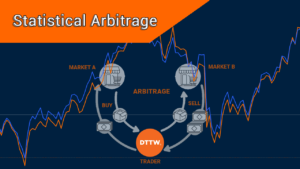Pair Trading Strategy
The historical correlation of the two stocks is the basis of a pair trading strategy. The main driver of this strategy could be the fact that the stocks participating in it should necessarily have a higher positive correlation rate
If a trader detects a correlation deviation, he may choose to implement this strategy. In other words, when a trader realizes that the two stocks are unrelated or if the correlation between the stocks no longer exists, then he or she can implement pair trading. Traders can even get rid of the short stock by selling it for as its prices are expected to go down, while they can hold on to the long stock as its prices are expected to rise.







